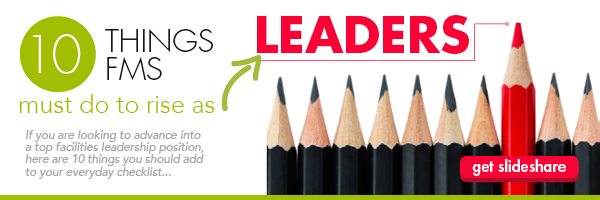Is Your Company a Good Candidate for Facilities Management Software?


Regardless of the kind of business you’re in, keeping up with a facility is a time-consuming and detail-oriented process. It’s your job to coordinate space, have knowledge of the infrastructure, and even to track company assets and who is using them. As your business grows the complexities related to facility management increase. 
Young businesses often start out with spreadsheets and email. But over time, many businesses discover that the DIY method is lacking in many ways. Finding a better approach is not only a good idea, it’s a necessity. Facilities management software makes it possible to track and manage your space and assets efficiently, which can result in savings of time and money. Has your company reached that point? Here’s how to tell if your company is a good candidate for facilities management software…
Technology is an Open Door
Upgrading from the do it yourself approach can feel intimidating to some people. Not everyone is comfortable with modern technology, and a new FM system may cause fear in technophobes. But if your employees are open to using new technology and see how this technology could benefit their workflow, you’re a good candidate for FM software.
Preparation for the transition should include education for your team members. A clear understanding of the benefits gained will help get employees on board with the idea. Take the time to share information about how the software will help streamline and simplify processes. Institute a rigorous training program that incorporates initial training and ongoing technical support, and ensure that some of your in house employees are also available to answer questions as your entire workforce shifts to a new technology.

Create how-to documents that expedite training and serve as an easy reference for employees who feel uncertain or stuck. In the long term, work to develop a tech-positive culture in your workplace by sharing new technology options with your employees, documenting your office’s technology practices, and holding learning sessions that keep employees up to date on best practices and emerging technologies in your field.
Data is a Solid Foundation
Every facilities management system runs on two things: data and the people who enter and use it. Before you leap into a new FM program, make sure that your data collection will allow that program to run smoothly. If your software requires detailed maps of your facilities, create these in Auto CAD to upload. If you need a detailed list of assets that need ongoing repair and maintenance, develop this inventory. Talking with employees before you work with new software will help you shape the data you collect and what you do with it. Your employees are a source of valuable information that can shape what data is needed. For example, your maintenance team may want to integrate monthly maintenance schedules with inventory ordering so the products needed to do required work will be available as the schedule dictates.
Processes Put Your Data to Work
Facilities management is about keeping your facilities running well, and ultimately this comes down to process. What processes do you have that keep your facility running smoothly, and how could they change? When you’re looking at new FM software, consider this as a time to critically examine your work order processes and other workplace systems. A small change can reap large efficiencies. For example, it may be that all of the internal service requests currently come to one person who is occasionally sick or on vacation.

Implementing facilities management software can help more employees see what’s needed and when, reducing the load and total reliance on that employee. As you consider your transition to FM software, think about the processes you have for managing service tickets, performing maintenance and moves, and booking facilities. Ask questions about the challenges that employees have with these processes and gather relevant employees to determine how to make change. That way, when you transition to new FM software, you’ll already have a team of individuals that can help in supporting the company through the transition.
Positive, Productive, and Proactive
Not something new – again. If your employees see FM software as an imposition rather than an asset, this can be a barrier to implementing your new software plan. It also speaks to your company’s culture. Culture plays a large role in the acceptance of any new software product or process. Work on building your own communication skills so that you can pinpoint what your company needs. Motivating employees and encouraging teamwork is one way to decrease resistance to change. It also helps build a trustful, respectful, and appreciative work environment. A positive workplace culture makes transitioning to new things easier and smooths the way for employees to adopt technology that will make their work lives simpler.
 Are you the right fit for facilities management software? While it might seem that high tech industries such as technology companies, energy, pharmaceuticals, and the financial industry would be the best fit for FM software, the reality is that any organization can benefit from this software. With the right approach to implementation the transition can be seamless. What are you waiting for? Explore the benefits of facilities management software today and see if this tool is a fit for your business.
Are you the right fit for facilities management software? While it might seem that high tech industries such as technology companies, energy, pharmaceuticals, and the financial industry would be the best fit for FM software, the reality is that any organization can benefit from this software. With the right approach to implementation the transition can be seamless. What are you waiting for? Explore the benefits of facilities management software today and see if this tool is a fit for your business.
